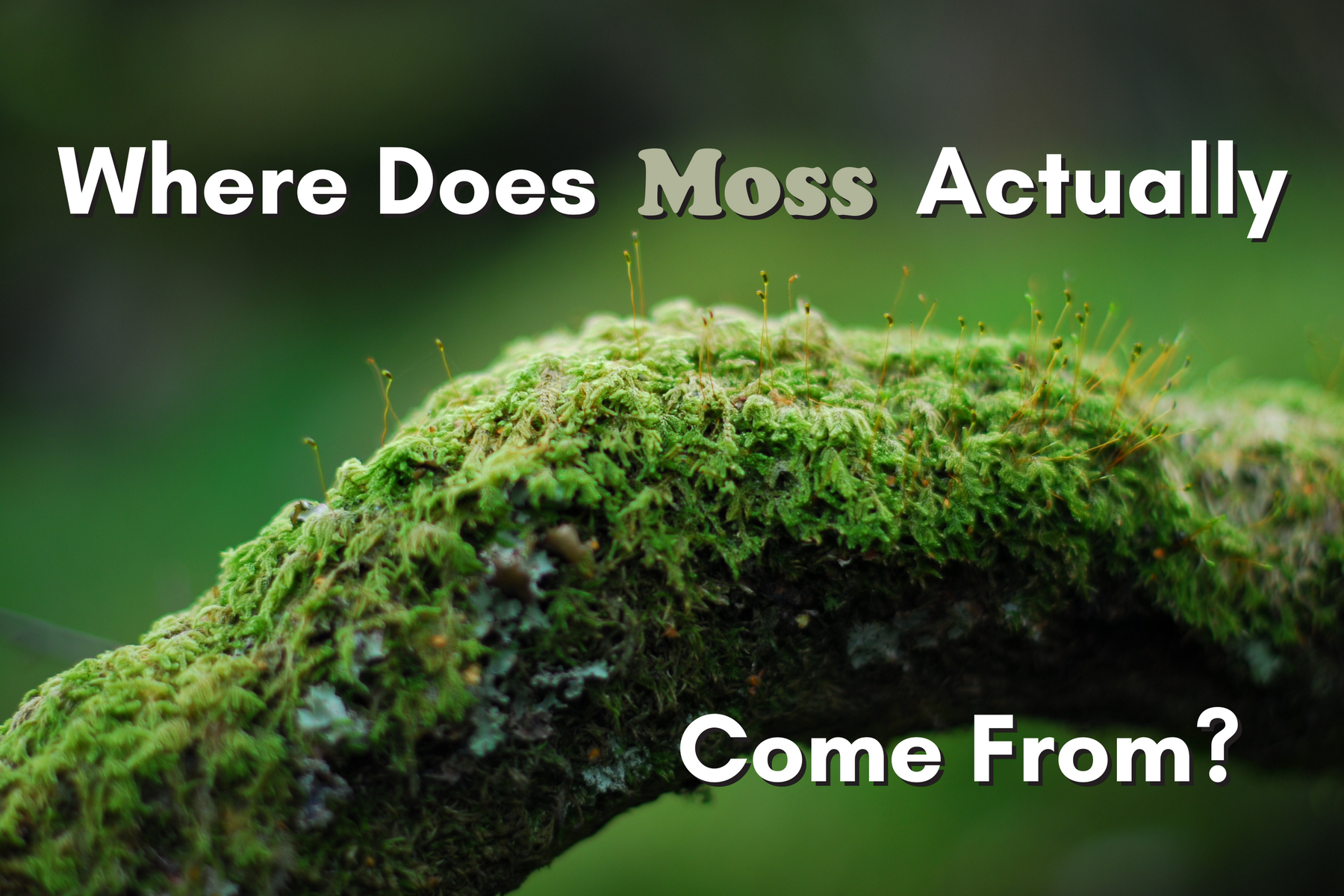With over 300,000 happy plants.
Over 300,000 happy plants

Moss is quietly fascinating. It carpets forest floors, coats stone walls, and softly blankets forgotten corners of urban spaces. Despite its simplicity and quiet presence, moss holds mysteries many overlook. But have you ever paused to wonder where moss actually comes from? How does it thrive in environments where most plants struggle to survive?
To understand moss, we need to journey back to its origins... deep into the story of life on Earth.
 Moss is one of Earth's oldest surviving land plants, appearing roughly 450 million years ago, far earlier than flowering plants and trees. When moss first appeared, our planet looked radically different—primordial landscapes with no lush forests, no towering trees, just barren rock and volcanic soils. Mosses became the quiet pioneers, slowly colonizing bare surfaces and making them hospitable for future plants.
Moss is one of Earth's oldest surviving land plants, appearing roughly 450 million years ago, far earlier than flowering plants and trees. When moss first appeared, our planet looked radically different—primordial landscapes with no lush forests, no towering trees, just barren rock and volcanic soils. Mosses became the quiet pioneers, slowly colonizing bare surfaces and making them hospitable for future plants.
Unlike the familiar flowering plants in our gardens, moss belongs to a group of non-vascular plants known as bryophytes. Bryophytes include mosses, liverworts, and hornworts. These plants lack sophisticated vascular systems, meaning they don’t have true roots, stems, or leaves like typical plants. Instead, they rely directly on their surroundings for moisture and nutrients, absorbing water through their thin, leaf-like structures.

Mosses don’t produce seeds or flowers. Instead, their life cycle involves two distinct stages: the gametophyte and sporophyte stages. The lush, green, carpet-like moss we recognize is the gametophyte—the primary form of the plant. In this stage, moss produces reproductive cells (gametes). When water droplets carry these cells between moss plants, fertilization occurs, leading to the sporophyte stage.
The sporophyte grows as a thin, delicate stalk topped with a capsule containing thousands of microscopic spores. These spores disperse with wind, rain, or the movement of animals, eventually landing on surfaces like rock, soil, or bark. If conditions—such as moisture, shade, and shelter—are favorable, spores germinate and a new moss colony begins.
Moss also reproduces through fragmentation. Small fragments can break away and establish new colonies. This remarkable adaptation allows moss to quickly spread across areas and colonize new terrain with ease.
Moss thrives in environments many plants find challenging. Typically, it favors moisture-rich, shaded locations that shield it from harsh sunlight and drying winds. You'll commonly find moss in:
Interestingly, moss often grows most abundantly on north-facing surfaces (in the northern hemisphere). This phenomenon is due to these surfaces typically receiving less direct sunlight, thus retaining more moisture and providing a consistently cooler environment.
There are around 12,000 species of moss known worldwide, each uniquely adapted to its environment. Here are several notable types:
Sphagnum Moss: Predominantly found in bogs, this moss retains enormous amounts of water and contributes to carbon sequestration, making it environmentally crucial. And we sell them as well!
Cushion Moss (Leucobryum glaucum): Characterized by its rounded, cushion-like appearance, often carpeting woodland floors and shaded banks.
Sheet Moss (Hypnum species): Forms extensive mats, commonly found on forest floors and ideal for moss gardens or green walls.
Haircap Moss (Polytrichum commune): Tall and distinctive, often found in open woodlands and heathland, easily identified by its hair-like capsules.
Reindeer Moss (Cladonia rangiferina): Actually a lichen, this moss is vital for Arctic ecosystems, providing food for reindeer and other wildlife.
 Despite their small stature, mosses play outsized ecological roles. They help prevent soil erosion by binding surfaces with their rhizoids (root-like structures that anchor them without absorbing nutrients). Moss also retains substantial water, contributing to the stability and hydration of ecosystems, especially crucial in forests, wetlands, and bogs.
Despite their small stature, mosses play outsized ecological roles. They help prevent soil erosion by binding surfaces with their rhizoids (root-like structures that anchor them without absorbing nutrients). Moss also retains substantial water, contributing to the stability and hydration of ecosystems, especially crucial in forests, wetlands, and bogs.
Additionally, moss serves as habitat and food for countless microscopic organisms and insects. By colonizing bare or disturbed ground, moss initiates ecological succession—the gradual restoration of ecosystems—paving the way for larger plants and eventual reforestation.
 Today, moss is gaining renewed attention not only for its ecological importance but also for its use in sustainable design and green architecture. Moss walls and roofs are increasingly common features in urban planning, helping mitigate heat islands, absorb pollutants, and improve air quality.
Today, moss is gaining renewed attention not only for its ecological importance but also for its use in sustainable design and green architecture. Moss walls and roofs are increasingly common features in urban planning, helping mitigate heat islands, absorb pollutants, and improve air quality.
Its adaptability makes moss an attractive, low-maintenance choice for interior designers and architects striving to integrate nature seamlessly into urban life. This use of moss aligns perfectly with modern society's growing desire for sustainable living solutions.
Understanding where moss comes from and how it thrives enriches our appreciation for this humble yet extraordinary plant. Moss is a quiet, persistent survivor, adapting effortlessly to environments other plants find impossible. Its journey from ancient pioneer to modern design material speaks volumes about its resilience, versatility, and ecological value.
So next time you encounter moss, whether on a walk in the woods, along a city street, or adorning an indoor wall... pause and consider its remarkable story. Moss doesn't merely exist; it thrives, quietly and deliberately, adding beauty and ecological balance wherever it grows.
Dejar un comentario